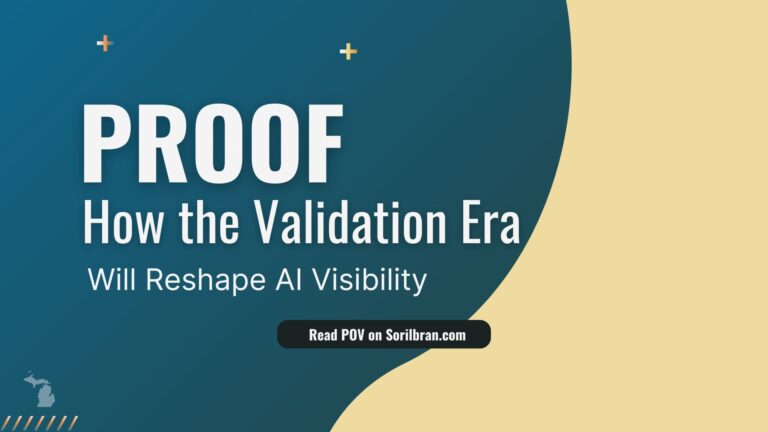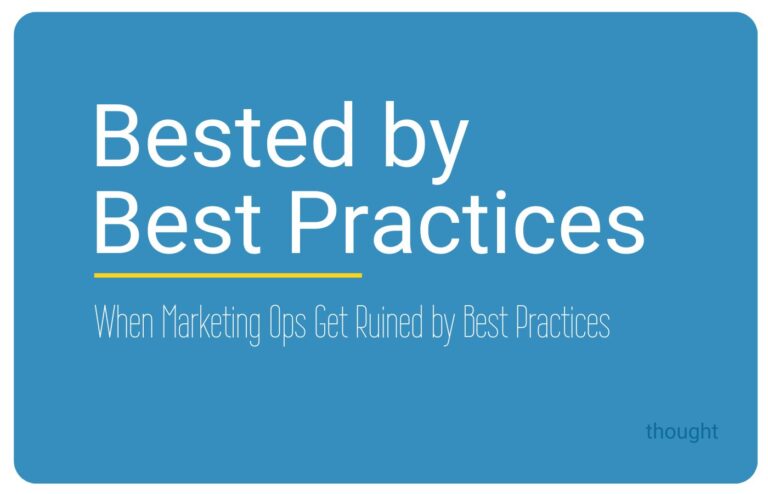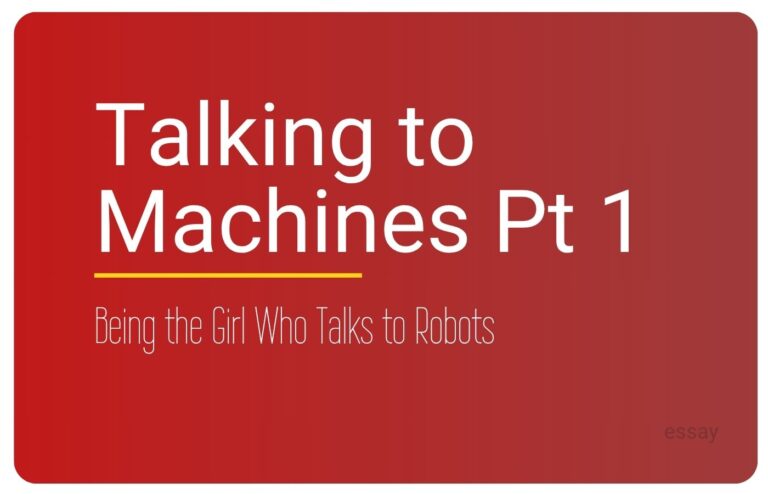What’s the Difference Between a Visibility Strategist and a Visibility Engineer?
And why both roles matter in the age of AI and search.
If you’ve spent any time around me or Five-Talent Strategy House, you’ve probably heard both of these titles: Visibility Strategist and Visibility Engineer.
They sound similar, but they play very different roles inside a brand’s visibility ecosystem.
The Advocate’s Lens
Before we get into definitions, let’s start with the why.
I call myself an AI and Search Advocate, because advocacy is the foundation of everything I do.
It’s the reason I take calls with founders who need clarity, post unprompted explainers on LinkedIn and Facebook, and build resources no one asked for but everyone benefits from.
That advocacy work fuels what I call the Clarity Model – helping people understand what visibility really is, why it matters right now, and how AI and search are reshaping what it means to be seen.
The Visibility Strategist
A Visibility Strategist designs the blueprint.
Strategy work focuses on understanding and mapping: how your audience searches for you, how your brand signals expertise, and how your digital ecosystem fits together to create the outcomes you actually want.
Think of this role as the architect of discoverability.
The strategist answers questions like:
- What do we want to be known for?
- How should we show up across AI and search environments?
- What stories, pages, and proof points create salience in the right knowledge graphs?
- How do visibility, reputation, and pipeline connect?
Visibility strategy always lives at the intersection of AI and search, because today you’re not just optimizing for Google, right? You’re always training large language models (LLMs) how to see you and what to remember you for.
The Visibility Engineer
If the strategist is the architect, the Visibility Engineer is the builder.
Engineering is where everything gets implemented, tested, and optimized until it works in real time. A visibility engineer translates strategic intent into tangible execution:
- Building or refining the content architecture that feeds AI and search.
- Implementing structured data, metadata, and schema.
- Connecting CRM, analytics, and automation tools so visibility turns into pipeline.
- Ensuring every signal – content, keyword, backlink, entity – is measurable and attributable to growth.
Where strategy defines the what and why, engineering delivers the how.
And then There’s Seeing Around Corners
For me, visibility work has never just been about search rankings or clever positioning.
It’s about pattern recognition. Pattern recognition, in this context, is what enables me to see how a brand, a market, and a moment are all moving at once.
I. Track. Patterns. Always have. And I notice them – and usually respond – before a pattern calcifies into best practices.
I can tell when something is scalable beyond its current season, or when a startup’s marketing systems are sprinting toward a dead end. I can see the pivot points before they show up on the org chart. I can see when an industry is shifting and I make preparations for the business to weather that shift – whether or not leadership is bought in.
So when I build a visibility strategy, I don’t just solve for now. I bake future pivots into the plan so that whatever we implement today still works 18 months from now.
That approach does two things:
- It keeps your pipeline productive without constant reinvestment.
- It keeps your marketing systems mobile, able to roll with the company as it evolves.
That’s what visibility strategy looks like when you design for durability – marketing with roller skates.
And Finally… The Language of Large Language Models
There’s another reason I love this work: it lives where language meets logic.
I didn’t come into AI through code. I came through words. And that turned out to be a real advantage. Here’s a good example of this:
When I first started using ChatGPT, I didn’t love it. Seemed like every other generative AI tool I’d used since 2019 – back before anybody called them generative AI tools. It was basically a glorified autocomplete.
But eventually, I realized the model worked best when I treated it like one of the human writers I oversaw. I’d create full content briefs for my writers – audience, context, goals, word count, all the things. So, I looped AI models into that editorial calendar by creating full content briefs for AI. I’d hand the model the same assignment I would give to a human team member.
The result? I got better writing – exponentially better writing – out of ChatGPT.
What? Why?
Because LLMs are trained on human language, they perform best when we speak to them like humans. So while others chase the “perfect prompt,” I default to training the models to understand how I communicate and communicate like me. Speak my language. I walk into the room, identify the intelligence occupying that room, and find the common ground.
Prompts matter. But prompts are fodder for marketers – not solos and micros. So, if I’m going to help you scale, I need to know how to work in a way that seamlessly integrates into your business – without you having to go to night school.
😂 That was funny – give me mine.
That stance – treating AI as a collaborator instead of a command line – accelerated my ability to strategize and build with speed and precision. And because I work with these models daily, I notice the tiniest shifts in tone, logic, and performance – the small cues that signal where the tech is heading next.
That’s part of what I bring to every client and project: not just marketing foresight, but linguistic intuition about how humans and AI learn from each other.
Research, Behavior, and Real-Time Strategy
I’m a big believer in research – especially original research. There’s tremendous value in data and trend analysis. But I don’t believe in waiting for other people to validate what I’m already seeing in real time before I move.
Behavior moves faster than research.
More than once, a CEO or client has sent me a research report that I was already part of the dataset for, asking me to read it. And when that happens, I just smile and say, “Yeah, I’ve seen this.” Because by the time the report hits their inbox, I’ve already sandboxed it, scaled it, and proven it across multiple brands.
That’s because research follows behavior. The numbers and reports eventually catch up to what practitioners are already testing and implementing in the wild.
So yes, research matters. But so does intuition, observation, and the courage to move when the pattern reveals itself – even if the market hasn’t labeled it yet.
Bro, I live to find strategies the market hasn’t labeled yet. 💪🏽
I leverage research. I learn from it.
But I don’t wait for it.
Why That Matters
Pattern recognition keeps me ahead of the market. Language intuition keeps me ahead of the machines. And behavioral instinct keeps me ahead of the reports.
Together, they let me build systems that are adaptable.







